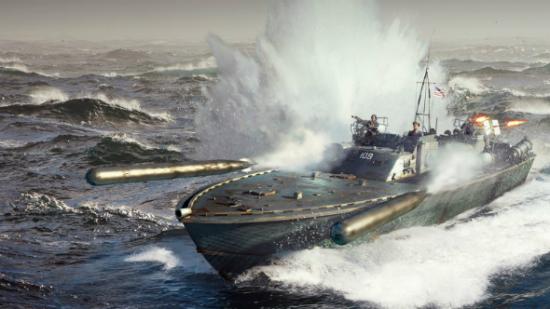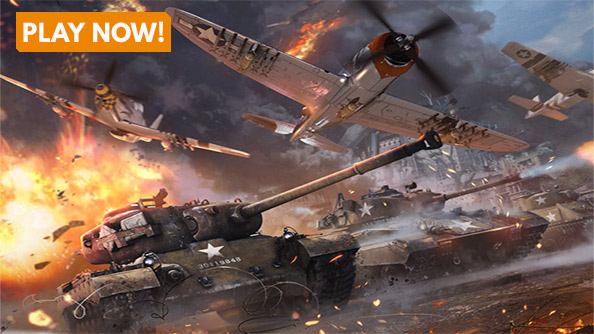This post is created in partnership with Gaijin Entertainment.
War Thunder’s upcoming Knights of the Sea mode looks set to give naval warfare its proper place in the triumvirate of battlegrounds most commonly referred to as land, sea and air. It’s still very much in its infancy, with an open beta due to arrive at some point later this year, but already thousands of players are logging in to fire torpedos and dutifully go down with their ship as part of the weekly pre-beta tests available to purchasers of Naval Packs.
Add some colour to your garage of deadly hardware with these War Thunder skins.
Naturally, combat on water is a far cry from what you might be used to in a tank or jet fighter. Unlike Aviation and Ground Forces, in Knights of the Sea you almost never take your finger off the trigger. Likewise, you’ll find that while you never stop moving, you’re actually rather immobile compared to your tank and plane counterparts. So in an effort to help you find your sea legs we’ve created this beginner’s guide for War Thunder’s naval battles.
Not tried War Thunder yet? Have a go here
Boats are hard to sink
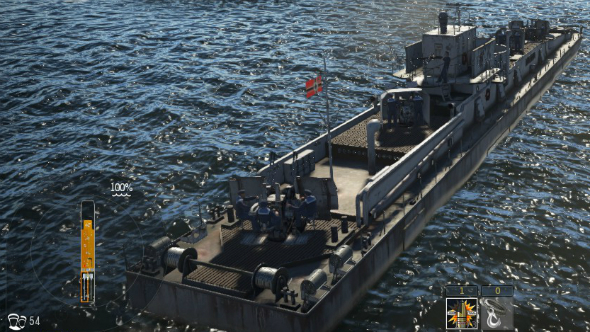
So it turns out that vessels in War Thunder’s naval battles are nearly impossible to sink quickly. They can only be fragged in very specific circumstances, such as a direct hit from a heavy calibre cannon to a loaded torpedo tube. This is because they have huge crew numbers compared to tanks and planes, making it very difficult to wipe out the entire crew. Their ammo racks are also hidden away in most circumstances, making it hard to isolate and detonate them as you would when firing at an enemy tank.
Torpedos are the only way to quickly down an enemy vessel, and they’re only viable in close-quarters encounters. It can be frustrating if you’ve managed to take an enemy boat by surprise but are unable to sink it before it can slink away behind cover, but it also means you get a second chance if the same thing happens to you. Your best bet for downing boats efficiently at range is to knock out its engine, start a fire and then pick its crew off – this part gets tedious when facing larger boats like the German AF D1, which has over 50 crew members. So get used to the idea of racking up multiple kill assists, but very few actual kills.
Always be on the lookout for torpedoes
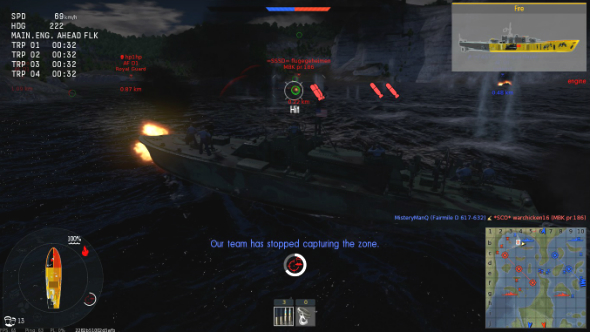
While it can take a couple of minutes of continuous cannon and machine-gun fire to down even a small PT boat, it only takes a single torpedo to destroy any boat in the beta so far. Worse still, in slower ships like the Russian MBK Pr. 186 and the aforementioned AF D1 avoiding torpedo fire is practically impossible as it takes too much time to too slow down or turn. Thankfully, you can spot torpedos travelling towards you from a great distance provided you’re looking for their iconic, arrow-straight wake. This is especially important when you’re in a fast boat like the US Elco PT 314, as you’ll often be the target of speculative torpedo fire, which can be much harder to spot because of the reduced visibility you have in such a small vessel.
Mastering bullet drop and horizontal lead is vital to winning in any firefight
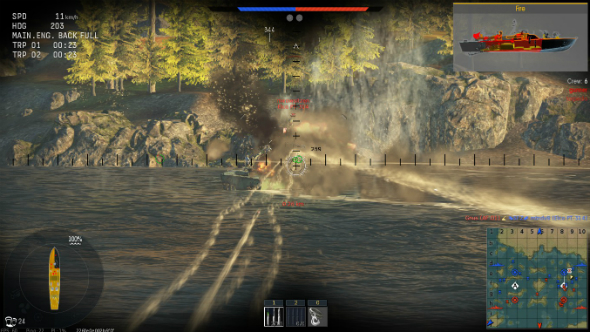
In Ground Forces you only really have to concern yourself with bullet and shell drop, which can be easily compensated for during mid-range firefights. In War Thunder’s naval battles not only do you have to overcome significant bullet drop when engaging enemies from across the map, you also have to predict where your target will be when your shots get to them, even more so in naval battles where it’s rare that you or your foe are ever stationery.
The gun calibres and bullet types are similar to what you might be used to from Ground Forces but most engagements take place over two kilometres of open water, so judging both bullet drop and horizontal lead simultaneously takes a lot of getting used to. Once you’ve got the hang of the distances and relative speeds you’ll find your armaments are much more effective. Plus, landing even a single effective strafe on an enemy vessel will at the very least net you a kill assist.
Get to know your boat
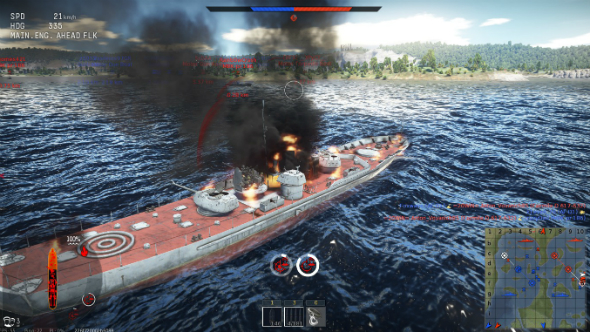
There’s a lot more nuance to War Thunder’s vessels than first meets the eye – it’s not just about picking the quick one or the one with all the guns. Unlike tanks and planes, the armaments and crew sizes of vessels vary massively from boat to boat. For example, Germany’s formidable armoured barge boasts over 50 crew members, two quadruple mounted 20mm AA guns, two 88mm naval cannons, a pintle-mounted 37mm autocannon, a large calibre machine gun, and depth charges. As you might expect, that means you can outfire anything in the game – but only when you’re exposing your side to the enemy. In such an immobile vessel, exposing your entire side makes you incredibly vulnerable to torpedo fire.
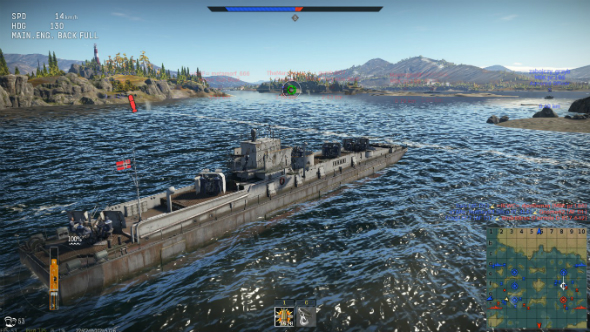
Likewise, while only a couple of your guns will be able to fire if you’re facing an enemy head-on, you greatly reduce your exposure to returning fire. Managing dwindling crew numbers and thus unmanned weapons is much, much more difficult when you don’t know what weapons are on your boat in the first place. It’s also worth taking note of where the engines are in your boat and trying to avoid any sustained damage to that area of the vessel as losing power will leave you a sitting duck, waiting to be picked off by the enemy. If you can’t escape to cover or turn to save a weakened side or better utilise one of your cannons, you’re already as good as dead.
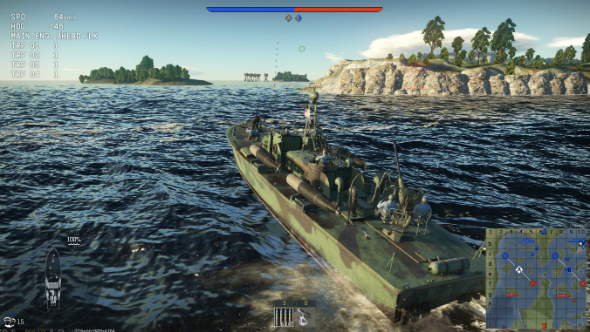
Similarly combat roles matter more for ships than they do for tanks in Ground Forces. While the same basic principles of agility and firepower apply, you’ll find that unlike with tanks, any boat can kill any other boat. It might seem obvious that the rapid Elco PT 314 should lead every attack, but actually they function far better as support vessels that move in to clear house with their torpedoes after the larger ships have traded their first few blows. Similarly, you might think it wise for the larger boats to snipe enemies with their impressive armaments, but their prime position is actually on the frontline.
You can always find safety in numbers
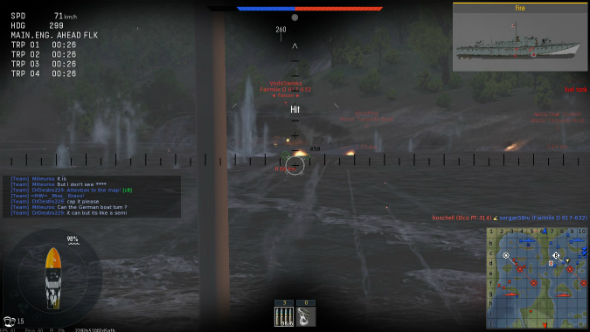
Lone wolves rarely succeed in any of War Thunder’s game modes, but in naval battles they’re especially doomed to failure. Because of how much time it takes you to down an enemy ship, stacking up as many ships as possible when mounting an attacking ensures that not only do you pose a greater threat to the enemy, they also have more targets to consider and take down. In Ground Forces, where tanks are often destroyed by a single well-placed shot lone wolf tactics can work. Working together also lets you make use of smaller, more vulnerable boats like the British Fairmile D 617-632 and US Elco PT 314 – both of which can be destroyed by cannon fire.
Always be mindful of your throttle
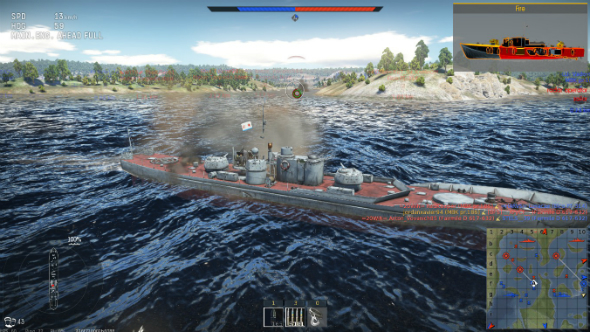
War Thunder’s naval battles don’t take place in open waters – there are always pockets of land, icebergs or wrecked ships to watch out for. Since you’ll be looking to your sides for targets most of the time, running aground or ramming a fellow teammate is much easier and damaging than it is in Aviation or Ground Forces. Unlike with tanks, you don’t have to hold your ship’s throttle down all the time to keep moving, and this is the same for reversing. It’s easy in the midst of a tense exchange of fire to completely forget what direction and speed you’re moving at, which makes correcting yourself when a problem does arise very difficult. The sticky throttle also makes peaking tactics tricky to pull off, particularly as the transition from forward motion to reversing and back again can be very time-consuming.
Want to try War Thunder for free? Click here
Got any sage advice from your time in the Knights of the Sea beta? Share it with us in the comments below.
